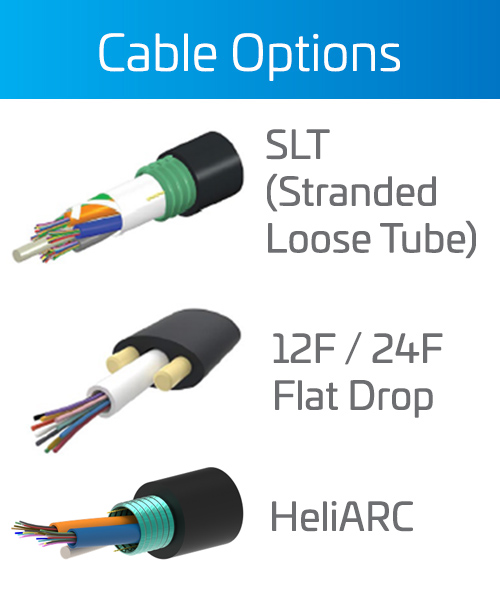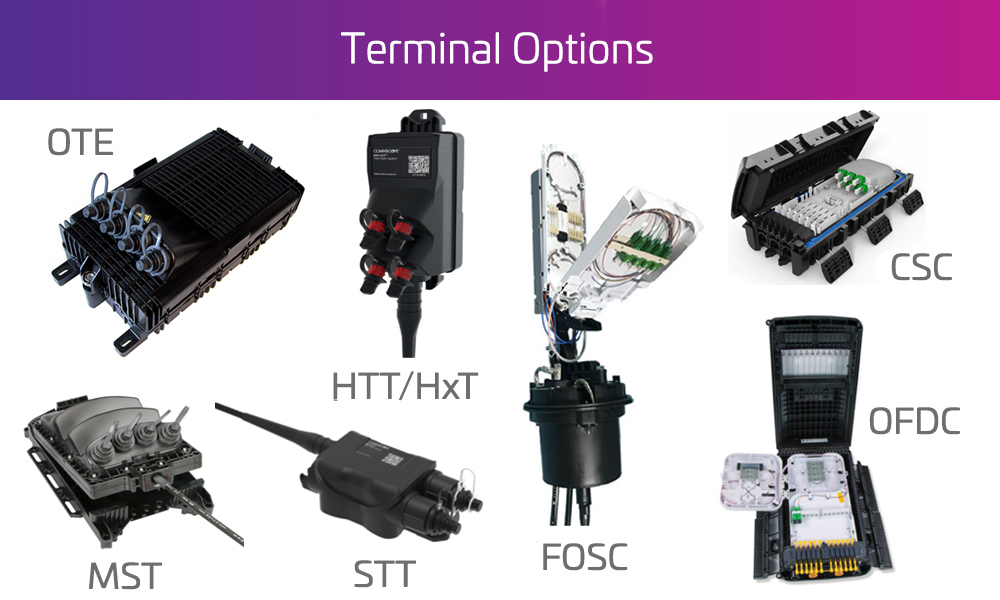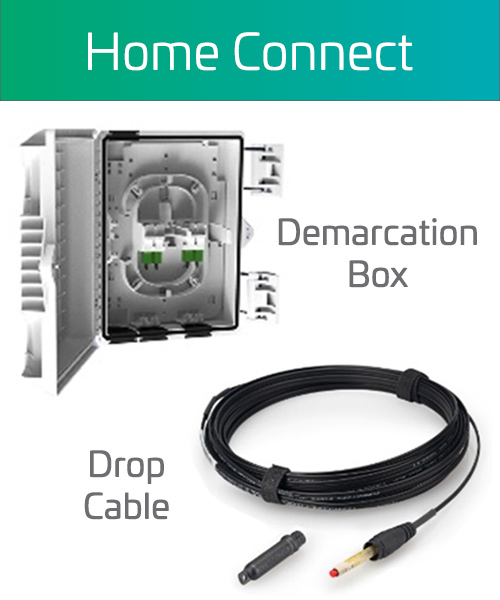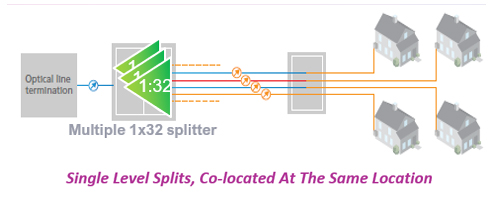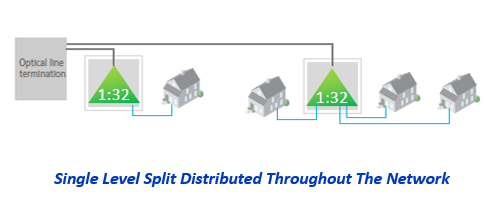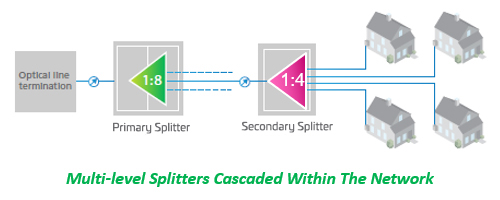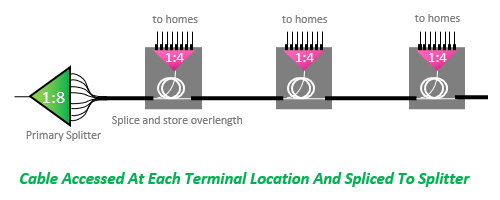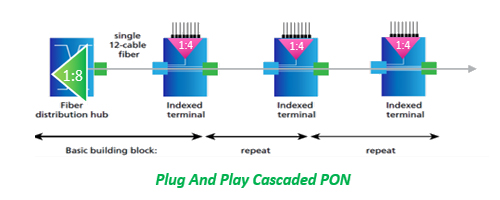Cascaded - Optical Tap Architecture
Unlike other network topologies, Optical TAP networks work by managing the signal power on a single fiber. Optical taps leverage a 1x2 bias splitter which directs part of the optical signal to the premises and passes through the remaining signal to the next tap location.
Networks must be ‘balanced’ to ensure an even signal strength is received at each premises--which is achieved by varying the bias splitter ratios along the network length. Optical TAP networks offer an extremely lean optical fiber network topology--ideally suited for rural and lower density housing environments.
Pros
- Very Lean Fiber Network Topology
- Reduced Splicing Needs
- Best Efficiency Of OLT Optical Power
- Increased efficiency of OLT optical power
Cons
- Required additional engineering effort
- Pre-allocation required for Point-to-Point services
- Multiple splice locations (can incorporate Plug-and-Play technology)
- Inventory holding of passive optical devices with various TAP ratios


